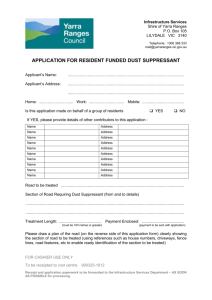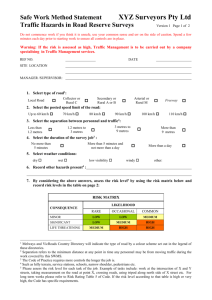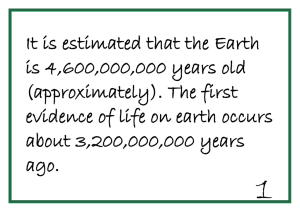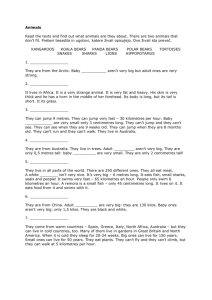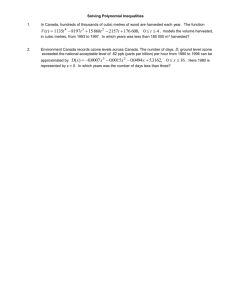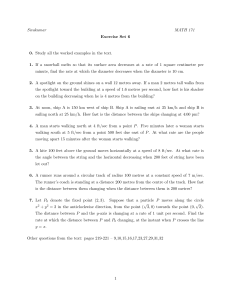From homework and today In Problem B, find the
advertisement
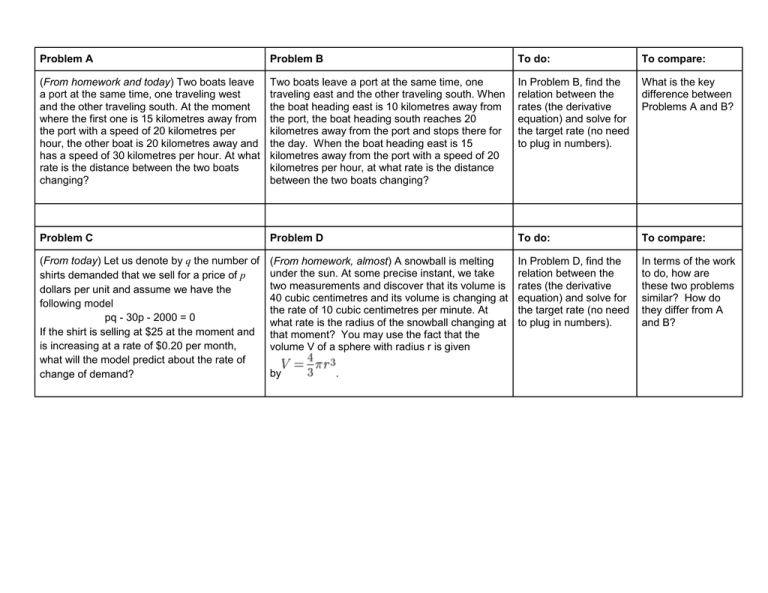
Problem A Problem B To do: To compare: (From homework and today) Two boats leave a port at the same time, one traveling west and the other traveling south. At the moment where the first one is 15 kilometres away from the port with a speed of 20 kilometres per hour, the other boat is 20 kilometres away and has a speed of 30 kilometres per hour. At what rate is the distance between the two boats changing? Two boats leave a port at the same time, one traveling east and the other traveling south. When the boat heading east is 10 kilometres away from the port, the boat heading south reaches 20 kilometres away from the port and stops there for the day. When the boat heading east is 15 kilometres away from the port with a speed of 20 kilometres per hour, at what rate is the distance between the two boats changing? In Problem B, find the relation between the rates (the derivative equation) and solve for the target rate (no need to plug in numbers). What is the key difference between Problems A and B? Problem C Problem D To do: To compare: (From today) Let us denote by q the number of shirts demanded that we sell for a price of p dollars per unit and assume we have the following model pq - 30p - 2000 = 0 If the shirt is selling at $25 at the moment and is increasing at a rate of $0.20 per month, what will the model predict about the rate of change of demand? (From homework, almost) A snowball is melting under the sun. At some precise instant, we take two measurements and discover that its volume is 40 cubic centimetres and its volume is changing at the rate of 10 cubic centimetres per minute. At what rate is the radius of the snowball changing at that moment? You may use the fact that the volume V of a sphere with radius r is given In Problem D, find the relation between the rates (the derivative equation) and solve for the target rate (no need to plug in numbers). In terms of the work to do, how are these two problems similar? How do they differ from A and B? by . Problem E To do: To compare: (From homework) Consider a tank of water that is draining by a hole at its bottom. The tank has the shape of an inverted cone that is 5 metres high and that has a base radius of 3 metres. At the precise moment when the water level is 2 metres, we measure that the tank is draining at a rate of 0.7 cubic metres per second. At that instant, what is the speed at which the water level is decreasing? Solve Problem E: (From homework) What makes Problem E different from the group of Problems A-D? Problem F To do: To compare: Consider a tank of water that is draining by a hole at its bottom. The tank has the shape of a cylinder that is 5 metres high and that has a radius of 3 metres. At the precise moment at which the water level is 2 metres, we measure that the tank is draining at a rate of 0.7 cubic metres per second. At that instant, what is the speed at which the water level is decreasing? Solve Problem F: What is the key difference between Problems E and F? Problem G To do: To compare: (Related to homework) A ladder that is 5 metres long is leaning against a wall. If I am pulling the bottom of the ladder away from the wall at a rate of 2 metres per second, how quickly is the top of the ladder moving if the top of the ladder is 4 metres from the floor? Solve Problem G: What is different about the use of triangles in this and the other problems? Problem H To do: To compare: A ladder that is 5 metres long is leaning against a wall. If I am pulling the bottom of the ladder away from the wall at a constant rate of 2 metres per second, how fast are the top and bottom of the ladder moving when they are moving with the same speed? Solve Problem H: What makes this different from the other related rates problems?

